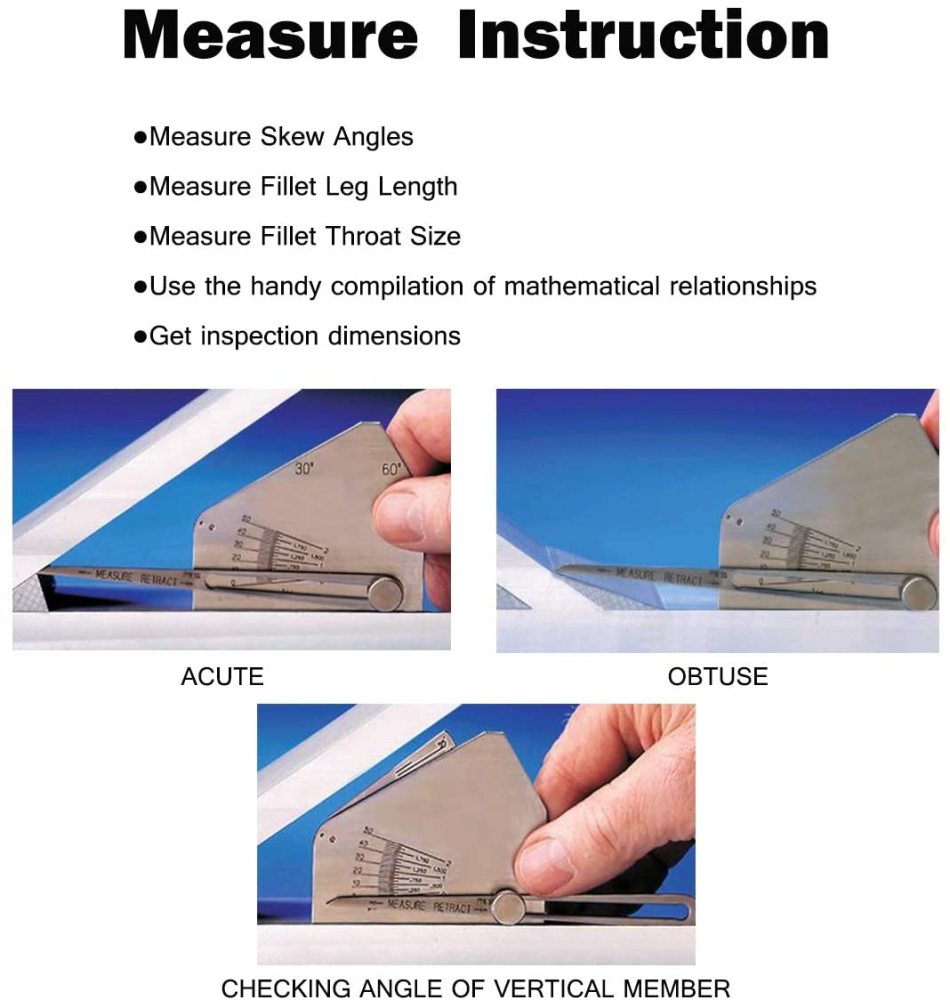The Role of Gauge Fillet Weld in Structural Integrity: What You Required to Know
The Role of Gauge Fillet Weld in Structural Integrity: What You Required to Know
Blog Article
Fillet Weld Layout Techniques: Maximizing Joint Efficiency and Looks for Structural Honesty
In the world of structural design and manufacture, the value of fillet weld style techniques can not be overstated. By thoroughly considering variables such as weld profile optimization, product choice, joint prep work methods, welding process performance, and visual improvement producers, approaches and designers can attain a harmonious balance between functionality and look in their bonded structures.
Weld Profile Optimization


Achieving an ideal weld profile involves a meticulous factor to consider of variables such as product thickness, joint arrangement, welding setting, and preferred welding rate. Furthermore, the option of ideal welding parameters, such as voltage, current, and travel rate, is fundamental in controlling the shape and measurements of the fillet weld. Making use of advanced welding strategies, such as pulse welding or robotic welding, can further improve the weld profile to meet certain style demands and quality criteria.
Basically, weld account optimization is an essential facet of fillet weld style that straight influences the total efficiency and reliability of bonded joints in structural applications.
Material Option Considerations
When considering product selection for fillet weld style, the compatibility of the base steels is a critical variable influencing the structural stability of the joint. It is important to choose materials that not just weld with each other effectively however additionally possess comparable mechanical residential properties to guarantee the tons is evenly distributed in between the base and the weld metals. Welding materials with greatly different buildings can lead to problems such as stress and anxiety concentrations, premature joint failing, or breaking.
Furthermore, the setting in which the welded structure will operate need to be taken into consideration when selecting products. Factors like corrosion resistance, temperature level changes, and direct exposure to chemicals can all influence the long life and performance of the weld joint. By selecting products that are appropriate for the desired application and environment, the general resilience and reliability of the welded joint can be substantially boosted.
Consequently, thorough consideration of product compatibility and ecological view it now variables is extremely important in guaranteeing the weld joint's stamina, durability, and overall architectural honesty.

Joint Prep Work Methods
Considering the essential role product choice plays in guaranteeing the architectural integrity of fillet weld joints, it is vital to execute specific joint preparation methods that maximize the connection in between the base steels. Joint preparation is a vital step that directly affects the top quality and strength of the weld. One essential strategy is the cleaning of base metals to eliminate any type of impurities like corrosion, oil, or paint that might compromise the weld's stability. This can be accomplished via methods such as grinding, cable cleaning, or chemical cleansing.
Additionally, tack welding the parts in location before the final weld assists preserve alignment and decreases distortion throughout the welding process. By meticulously adhering to these joint prep work methods, welders can improve the overall efficiency and aesthetic appeals of fillet weld joints while guaranteeing structural sturdiness.
Welding Process Efficiency
Effective welding processes are important for achieving optimum efficiency and quality in fillet weld manufacture. One essential aspect of improving welding procedure performance is picking the suitable welding helpful hints method. Variables such as product type, joint design, and welding setting should be meticulously thought about to determine one of the most suitable technique. As an example, procedures like gas steel arc welding (GMAW) and flux-cored arc welding (FCAW) are typically made use of for fillet welds due to their flexibility and rate (Gauge Fillet Weld).
In addition, guaranteeing appropriate devices arrangement and maintenance is important for reliable welding. Routine calibration of welding makers, inspection of consumables, and upkeep of welding torches can prevent downtime and rework, eventually saving time and sources. Furthermore, using experienced welders with knowledge in the certain welding process being utilized can significantly influence performance. Trained welders are more proficient at readjusting parameters, troubleshooting issues, and maintaining consistent weld quality.
Aesthetic Enhancement Techniques
To maximize the quality of fillet weld manufacture, implementing visual enhancement approaches can play an essential duty in guaranteeing precision and accuracy during the welding procedure. Visual aids such as weld dimension assesses and magnifying lenses can aid in evaluating weld profiles and dimensions accurately. By integrating these aesthetic improvement approaches right into the welding procedure, welders can attain not just structurally sound fillet welds however likewise visually attractive results that meet sector criteria.

Final Thought
Finally, enhancing fillet weld design includes careful consideration of weld profile, product selection, joint preparation, welding process performance, and visual enhancement approaches. By executing these approaches, structural integrity read the full info here can be enhanced while also accomplishing visual appeal. It is essential to focus on both performance and appearances in fillet weld design to guarantee the total quality and resilience of the joint.
By diligently considering elements such as weld profile optimization, product option, joint prep work techniques, welding process effectiveness, and aesthetic improvement methods, engineers and fabricators can accomplish an unified equilibrium in between functionality and appearance in their welded structures.In the world of fillet weld style, enhancing the weld account plays a critical duty in making sure architectural integrity and efficiency. The weld account, which consists of the dimension and shape of the weld cross-section, straight influences the circulation of stress and anxiety and load-bearing ability within the joint. It is essential to pick products that not only weld together properly but also have comparable mechanical residential or commercial properties to guarantee the load is equally dispersed between the weld and the base steels - Gauge Fillet Weld.In conclusion, optimizing fillet weld layout includes careful factor to consider of weld account, product selection, joint preparation, welding process performance, and visual enhancement techniques
Report this page